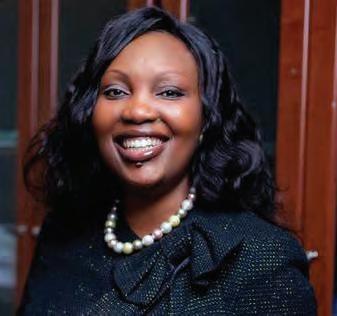
3 minute read
Zambia: Zanaco to Enter Micro-Finance as Part of Digital Push, says CEO
By David Whitehouse
Zambia National Commercial Bank (Zanaco www.zanaco.co.zm) plans to launch microfi nance services including loans and savings for poor households in the fourth quarter, CEO Henk Mulder tells The Africa Report.
Advertisement
The services are part of Zanaco’s digital strategy and will rely on digital credit-scoring and collection systems, says Mulde. The loans will be mainly
to households, for amounts as small as $50
or $100. “You can do it eႈ ciently if you can do it digitally,” he adds.
Microfi nance has too often concentrated on lending to the exclusion of saving, argues Mulder. “That’s the problem. Borrowing is not necessarily a good idea with high interest rates. It can bring people into trouble.” Microfi nance borrowers from Zanaco will also be able to have a savings account, he said. “It’s not a one-product push.”
Mulder is optimistic about prospects for Zambia’s economy. Discretionary spending globally has been hurt by COVID-19, but basic needs in Zambia are still being fulfi lled. Copper, he notes, has rebounded to well above $6,000 per ton.
Still, Zambia needs greater economic diversifi cation away from copper mining and agriculture. “We need more industrialisation. We need more value-added,” he notes. There are not enough small new businesses starting in Zambia, says Mulder. But young entrepreneurs should not be borrowing straight away to get going. “You have to start small.”
The government needs to educate and give incentives to entrepreneurs. “Starting a business doesn’t mean that you are going to make a profi t right away,” something which the government
Mukwandi Chibesakunda, CEO Zanaco
Forbes
doesn’t always seem to understand, he says. “They could do better on that.”
Succession
Zanaco, which listed in 2008, is Zambia’s biggest local bank. Its largest shareholder with a stake of 45% is the African investment company Arise, which is backed by Norfund, Rabobank, and Dutch development bank FMO.
Mulde, who became CEO in 2016, will step down to be replaced by Mukwandi Chibesakunda, CEO of National Savings & Credit Bank of Zambia, or NATSAVE. Chibesakunda, the fi rst female
President of the Zambia Institute of Banking
and Finance, joins Zanaco on 1 October. “It’s time for a Zambian CEO,” says Mulder, who plans to seek non-executive African roles. • The bank’s digital strategy means that IT security will need to be high on Chibesakunda’s agenda, says Mulder. “It’s a worry we all have

as bankers. I would advise her to focus a lot on it.” • A priority will be ensuring that the bank’s management board has suႈ cient depth, adds
Mulder. • Chibesakunda will also need to close branches as digital channels take greater prominence, notes Mulder. • This, he adds, is a more sensitive issue for a
Zambian bank, as opposed to a foreign bank operating in Zambia. • About 30% of branches will need to be cut in coming years, he estimates. • Physical points of contact will be maintained by greater reliance on agents, for example family shops, where basic banking transactions can be carried out. • These agents are a crucial element of the bank’s digital strategy, says Mulder. • Zanaco now has about 6,500 agents versus 400 in 2016. • Mulder expects the fi gure to rise to 20,000 in the next three years.
Mulder also expects his successor to be charting a course through a process of national banking consolidation. The current total of 19 banks in Zambia needs to drop to about nine or ten, he says, adding that the process would be facilitated by the implementation of Basel II capital requirements for banks. In any case, he says, “consolidation is a question of time. It’s unavoidable.”
Bottom Line
Zanaco will need discipline not to lend too fast too soon to poor households, while keeping an emphasis on less lucrative savings products.
https://www.theafricareport.com/33583/zambia-zanaco-toenter-micro-fi nance-as-part-of-digital-push-says-ceo Image credit: sadcnews.org:












